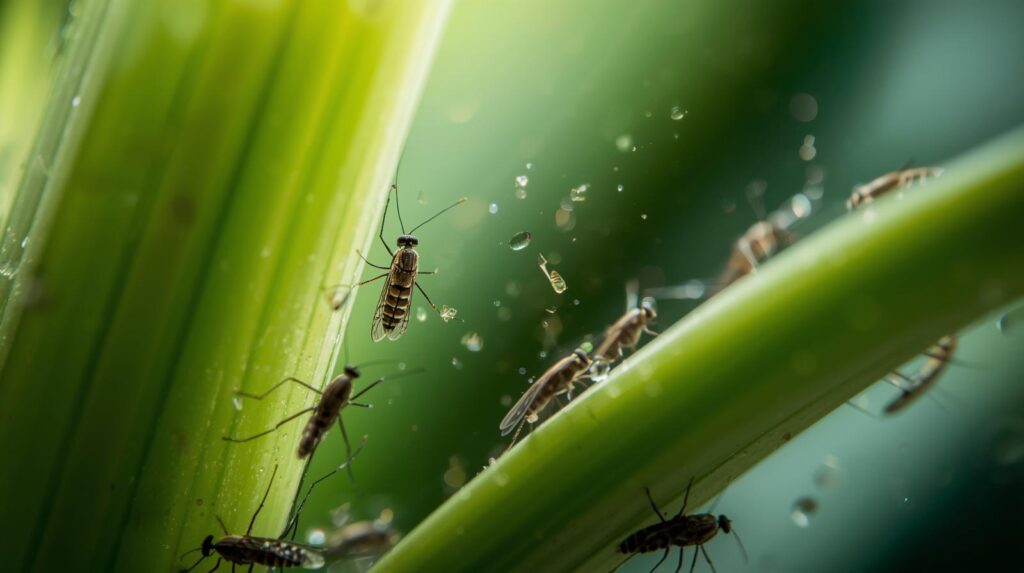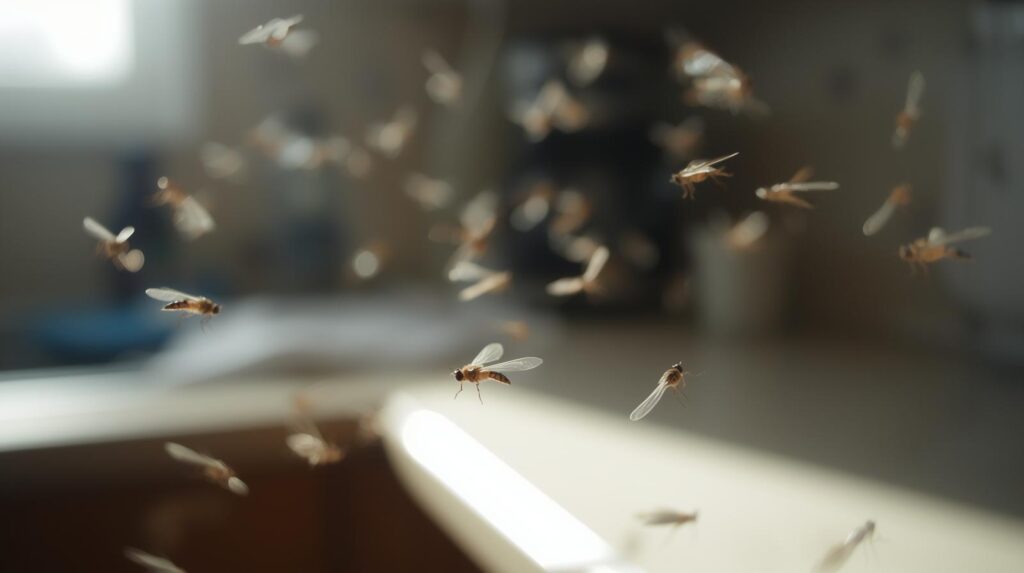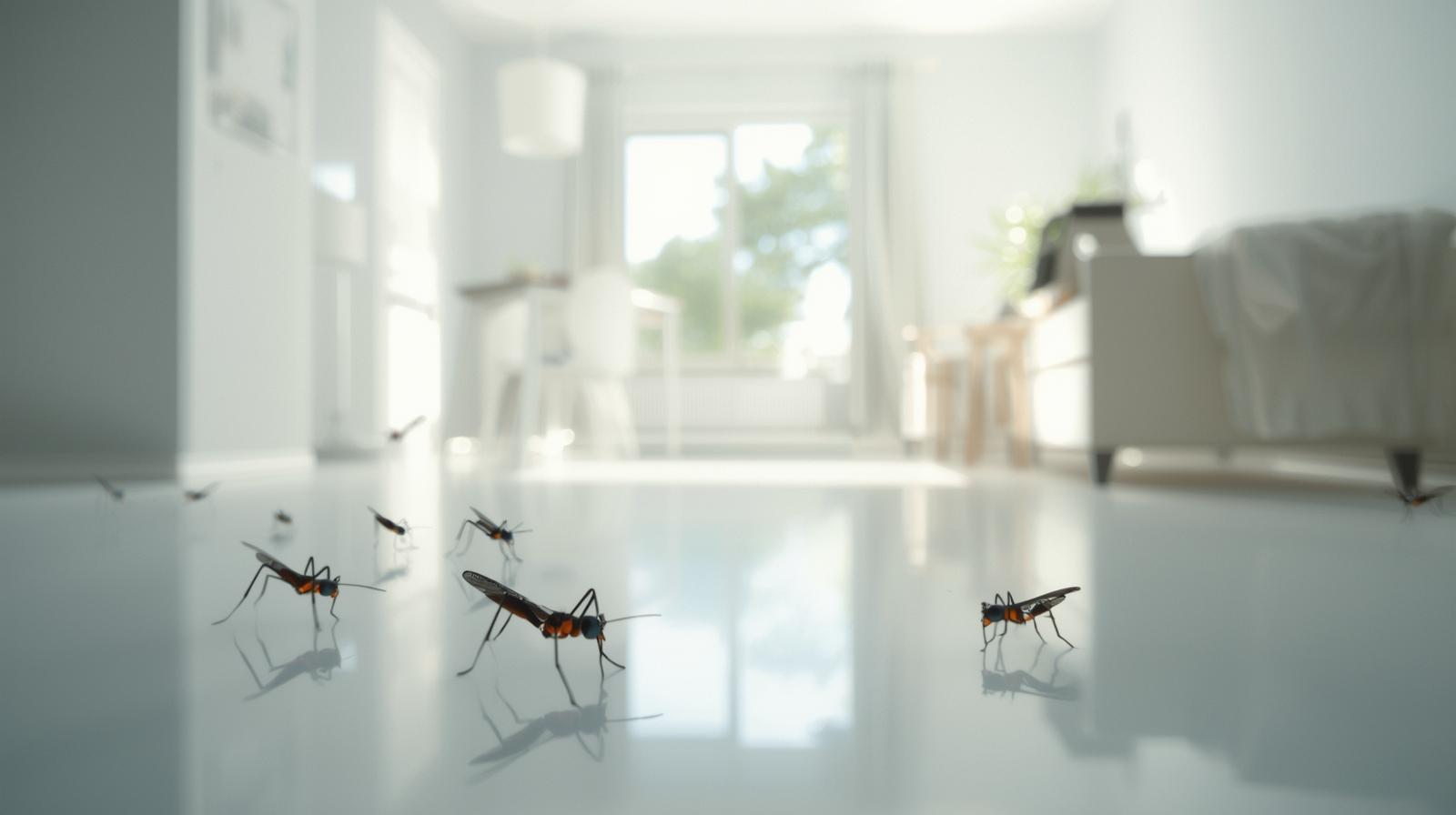Got gnats in your kitchen or houseplants? Learn the fastest, most effective ways to get rid of gnats using DIY traps, professional treatments, and simple prevention tips. Stop the infestation today!
how to get rid of gnats: gnat trap, kill gnats, fruit flies vs gnats, fungus gnats, drain flies, gnat infestation, gnat control solutions.
Why Are Tiny Flying Insects Taking Over Your Home?
If you’ve noticed annoying clouds of tiny, dark-colored flies buzzing around your kitchen, houseplants, or bathroom, you are likely dealing with a common household pest: gnats. These tiny flying insects are not only a nuisance but can also be a sign of a moisture or food source problem in your home.
The good news is that you don’t have to live with a gnat infestation. We’ll cover the most effective DIY and professional solutions, teaching you exactly how to get rid of gnats for good, whether you have a few stragglers or a full-blown swarm.
Step 1: Identify Your Enemy – Are They Gnats, Fruit Flies, or Drain Flies?

Before you can effectively kill gnats, you need to know which type of pest you are facing, as their breeding sources differ.
| Pest Type | Primary Attraction/Breeding Source | Where You’ll Find Them |
| Fungus Gnats | Wet, overwatered houseplant soil (they feed on fungus/decaying roots). | Near potted plants. |
| Fruit Flies | Overripe or rotting produce, spills, and garbage. | Near fruit bowls, recycling bins, and pantries. |
| Drain Flies (Moth Flies) | Organic sludge buildup inside sink, bathtub, or shower drains. | Near drains, often crawling or hopping. |
Pro Tip: If you see them flying out of a drain after running hot water, you have drain flies. If they swarm when you water a plant, you have fungus gnats. Identifying the source is the first and most crucial step in gnat control solutions.
Step 2: Immediate DIY Gnat Traps and Killers
For immediate relief from adult gnats, these simple homemade gnat trap methods work wonders:
1. The Apple Cider Vinegar Trap
This classic method is highly effective for fruit flies and general gnats.
- Materials: Small bowl, Apple Cider Vinegar, a few drops of dish soap, plastic wrap, and a rubber band.
- Instructions: Pour a few tablespoons of ACV into the bowl. Add a few drops of dish soap—this breaks the surface tension, causing the gnats to sink and drown. Cover the bowl with plastic wrap and poke several small holes with a toothpick. Gnats fly in for the sweet smell but can’t escape.
2. The Bleach or Boiling Water Drain Flush
If your infestation is centered around your sink, the source is likely drain flies.
- Instructions: Pour a gallon of boiling water down the affected drain once a day for a week. Alternatively, you can use a diluted bleach solution (one part bleach to ten parts water) or a commercial drain cleaner designed to break down organic matter. This targets eggs and larvae.
3. Sticky Traps for Houseplants
To combat fungus gnats attacking your indoor plants, yellow sticky traps are essential.
- Instructions: Purchase small, yellow, adhesive strips from a garden center and place them directly into the soil of your infested pots. The bright yellow color attracts the adult gnats, trapping them before they can lay more eggs.
Step 3: Eliminate the Source and Prevent Future Infestations

Targeting the adult flies only offers temporary relief. To truly get rid of gnats permanently, you must remove their breeding grounds.
For Fungus Gnats in Plants:
- Stop Overwatering: Allow the top 1-2 inches of soil to dry out completely between waterings. Damp soil is their nursery.
- Diatomaceous Earth (DE): Sprinkle a thin layer of food-grade DE over the soil. This natural powder is harmless to humans and pets but kills the gnat larvae when they crawl through it.
- Bottom Watering: Water your plants from the bottom tray. This keeps the top layer of soil dry, preventing adult gnats from laying eggs there.
For Fruit Flies and Drain Flies:
- Tidy Your Kitchen: Immediately wipe up spills, rinse soda cans and bottles, and never leave dirty dishes soaking overnight.
- Refrigerate Produce: Store all fruits and vegetables in the refrigerator, or keep them covered. Discard any overly ripe or rotten items immediately.
- Clean Garbage Cans: Use a trash can with a tight-fitting lid and regularly clean the inside of the can, especially where liquids may have leaked.
When to Call a Professional for Gnat Control
While the DIY methods above are often effective for minor to moderate issues, a persistent or widespread gnat infestation may indicate a deeper problem, such as a large organic buildup in hard-to-reach plumbing or a source you simply cannot find.
If you have tried multiple DIY solutions for more than a week without success, it’s time to call in the experts.
- Persistent Infestation: The gnats return immediately after treatment.
- Unknown Source: You can’t locate the exact source of the breeding.
- Health Concerns: You want to ensure the treatment is safe for children, pets, and individuals with allergies.
Our certified technicians use advanced inspection tools to locate hidden breeding sources and apply targeted, effective gnat control solutions that are safe for your family and home.
Conclusion: Take Back Your Home from Gnats
Dealing with gnats can be frustrating, but with the right approach—identification, immediate trapping, and long-term source elimination—you can successfully take back your home. Start with the ACV trap and dry out your plants, and if the battle is too much, remember that a professional solution is just a phone call away. See other reviews
